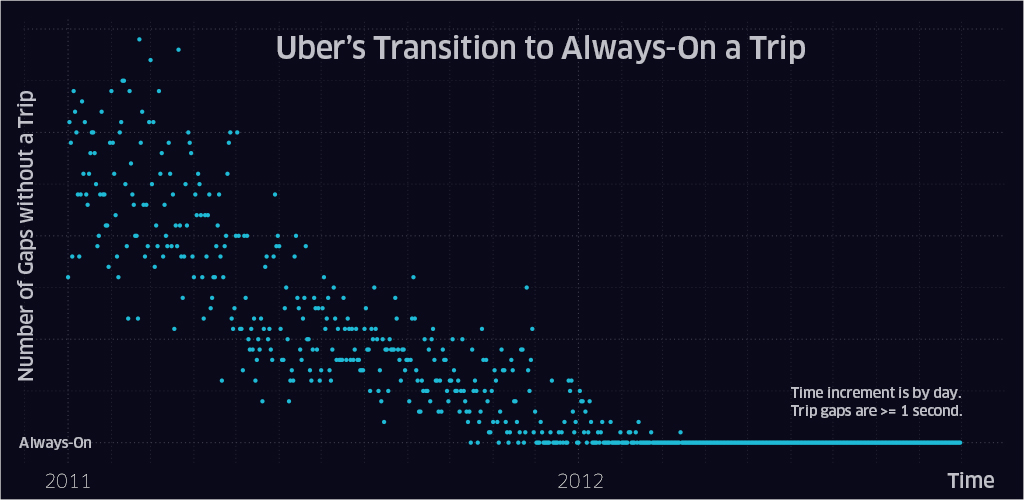A Day in the Life of Uber
Written by
Modern cities are constantly in motion. At Uber, we know this firsthand: since early 2012, a trip is going on somewhere around the world every second of every day on our platform. Today, the #UberData Team examines what a city in action looks like from Uber’s increasingly international perspective.
We look at New York City, San Francisco, Mexico City, London, Paris, and Sydney.
A traditional map, even a digital one, is static — a geographical representation of a city’s physical structures: roads, buildings, parks, landscape (use Google Maps, by the way, so you can request an Uber!) More advanced features may include an indicator of traffic which you can periodically refresh. Yet for all of these advances, these maps don’t show how a city actually moves throughout the day.
To address this we’ve created a series of visualizations in an effort to answer the question: how does a city live?
Using anonymized Uber data, we look at a 24 hr time period in late July 2014, overlaying trips on the OpenStreetMap (OSM) service. Thus, we not only see a day in the life of Uber but also a night in the life of Uber.
If a trip occurs on the OSM segment (segments are predefined by default for every city), that section of the city grid lights up. Additionally, we incorporated transparency into each individual trip as it appears in the visualization, so multiple trips simultaneously occurring in the same section appear brighter than a single trip moving through that space.
London
Mexico City
New York City
Paris
San Francisco
Sydney
The take-home (or rather, get-home) conclusion from the above visualizations:
In some of our biggest markets around the world, our cities never sleep.
Uber operates at all hours enabling people to get where they want to go, a “third rail” bringing parts of a city closer together through reliable, accessible transportation.
How long has this phenomenon been going on? Well, Uber has technically been in operation since end of 2010, but to better answer this question we determined when the last time an Uber trip wasn’t taking place somewhere in the world.
The last time the Uber platform went a single second without any trip: March 14, 2012.
For the last 2 1/2 years, we haven’t had a single second without a trip. Increasingly, in Uber’s world of over 200 cities, it’s 5’o clock somewhere — and for us, that means the start of rush hour (see the above visualizations for their evening rush hours) and one of several demand peaks throughout a 24 hr cycle.
Today’s Uber is, from a global standpoint, an uninterrupted Uber. There’s always a trip going on somewhere. Over time, we’re bringing this vision bit by bit (and, via our partners and riders, atom by atom) to the cities we operate in. We’re making substantial progress across space and time to make tomorrow’s Uber #UberEverywhere.
